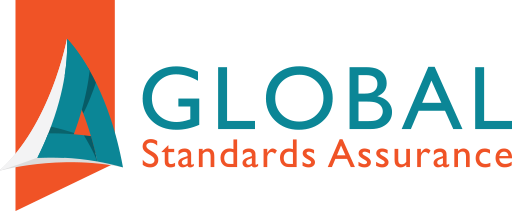Article by James Bennett –
Introduction
In today’s rapidly evolving work landscape, ensuring the safety and well-being of employees has become a top priority for organizations. A safe and healthy workplace not only protects employees from harm but also fosters productivity, engagement, and overall organizational success. ISO 45001, the international standard for occupational health and safety management systems, provides a framework that helps organizations create and maintain safe work environments. In this blog, we will explore the benefits of ISO 45001 and how it can contribute to creating safe and healthy workplaces.
Understanding ISO 45001
ISO 45001 is a globally recognised standard developed by the International Organization for Standardization (ISO) to provide organizations with a systematic approach to managing occupational health and safety (OH&S) risks. It is designed to help organizations of all sizes and industries establish a framework to prevent work-related injuries, illnesses, and fatalities while promoting a proactive safety culture.
Benefits of ISO 45001
- Legal Compliance: One of the primary benefits of implementing ISO 45001 is ensuring legal compliance. The standard helps organizations identify and understand relevant OH&S legal requirements and regulations applicable to their industry. By implementing the necessary controls and procedures, organizations can minimize the risk of non-compliance, avoiding potential penalties and legal liabilities.
- Improved Workplace Safety: ISO 45001 emphasizes hazard identification, risk assessment, and control measures to create safer work environments. By implementing the standard’s systematic approach, organizations can proactively identify potential hazards, evaluate risks, and implement controls to prevent accidents and injuries. This leads to a significant reduction in workplace incidents and a safer working environment for employees.
- Enhanced Employee Well-being: ISO 45001 places a strong emphasis on employee participation and involvement in OH&S matters. By involving employees in the identification of hazards, development of procedures, and continuous improvement efforts, organizations empower their workforce and promote a culture of shared responsibility for health and safety. This active participation fosters employee engagement, morale, and overall well-being.
- Increased Productivity and Efficiency: A safe and healthy workplace directly impacts employee productivity. By reducing accidents, injuries, and work-related illnesses, organizations can minimize absenteeism, staff turnover, and disruptions to workflow. Additionally, a proactive approach to OH&S management enhances operational efficiency by streamlining processes, optimizing resource allocation, and minimizing downtime due to incidents or regulatory issues.
- Positive Brand Reputation: Organisations that prioritize employee health and safety through ISO 45001 certification demonstrate their commitment to stakeholders, including employees, customers, investors, and the wider community. This commitment enhances their brand reputation, instills trust, and differentiates them from competitors. It also attracts socially responsible investors and environmentally conscious customers who value organizations with a strong safety culture.
Implementing ISO 45001
- Leadership Commitment: Successful implementation of ISO 45001 begins with leadership commitment. Top management must demonstrate a clear commitment to employee health and safety, allocate necessary resources, and establish OH&S policies that align with the standard’s requirements. Leadership involvement sets the tone for the entire organization and encourages employee participation.
- Hazard Identification and Risk Assessment: Organizations need to systematically identify potential hazards and assess associated risks in the workplace. This involves conducting comprehensive risk assessments, involving employees in the process, and implementing control measures to mitigate identified risks. Regular monitoring and review of controls are essential to maintaining the effectiveness of risk management systems.
- Employee Engagement and Training: Employee involvement and communication are vital for creating a safety culture. Organizations should provide appropriate training to employees, empowering them to identify hazards, report incidents, and contribute to continuous improvement efforts. Regular communication channels, such as safety meetings, newsletters, and feedback mechanisms, should be established to ensure effective information flow.
- Documented Procedures and Continuous Improvement: ISO 45001 requires organizations to establish and maintain documented procedures and records related to OH&S management. This includes developing policies, procedures, and work instructions for hazard identification, risk assessment, incident investigation, and emergency preparedness. Regular audits and reviews enable organizations to identify areas for improvement and implement corrective actions.
Case Studies: Successful ISO 45001 Implementation
GlaxoSmithKline (GSK): GSK, a leading pharmaceutical company, implemented ISO 45001 across its global operations. By prioritising employee health and safety, GSK achieved a significant reduction in workplace incidents and injuries. The company’s proactive approach to OH&S management not only improved employee well-being but also positively impacted operational efficiency and productivity.
Jaguar Land Rover: Jaguar Land Rover, a renowned automotive manufacturer, adopted ISO 45001 to enhance workplace safety. By implementing the standard, the company strengthened its safety culture, reduced accident rates, and improved employee engagement. Jaguar Land Rover’s commitment to employee well-being and continuous improvement through ISO 45001 has set a benchmark for the automotive industry.
Creating safe and healthy workplaces is a shared responsibility that requires organizations to prioritize employee well-being and proactively manage occupational health and safety risks. ISO 45001 provides a comprehensive framework that helps organizations establish robust OH&S management systems, leading to numerous benefits such as legal compliance, improved workplace safety, enhanced employee well-being, increased productivity, and a positive brand reputation. By embracing ISO 45001, organisations can demonstrate their commitment to their most valuable asset—their employees—and contribute to a culture of safety and well-being in the workplace.
I AM INTERESTED IN ISO CERTIFICATIONS AND TRAININGS:
If you are interested in obtaining ISO certification for your organisation, or train your staff, we invite you to schedule a complimentary consultation with one of our knowledgeable representatives at Global Standards Assurance. To request your free consultation, please contact us, and we will provide guidance on the most suitable ISO standard and training for your organisation. Let us assist you in embarking on your path towards ISO certification.”

